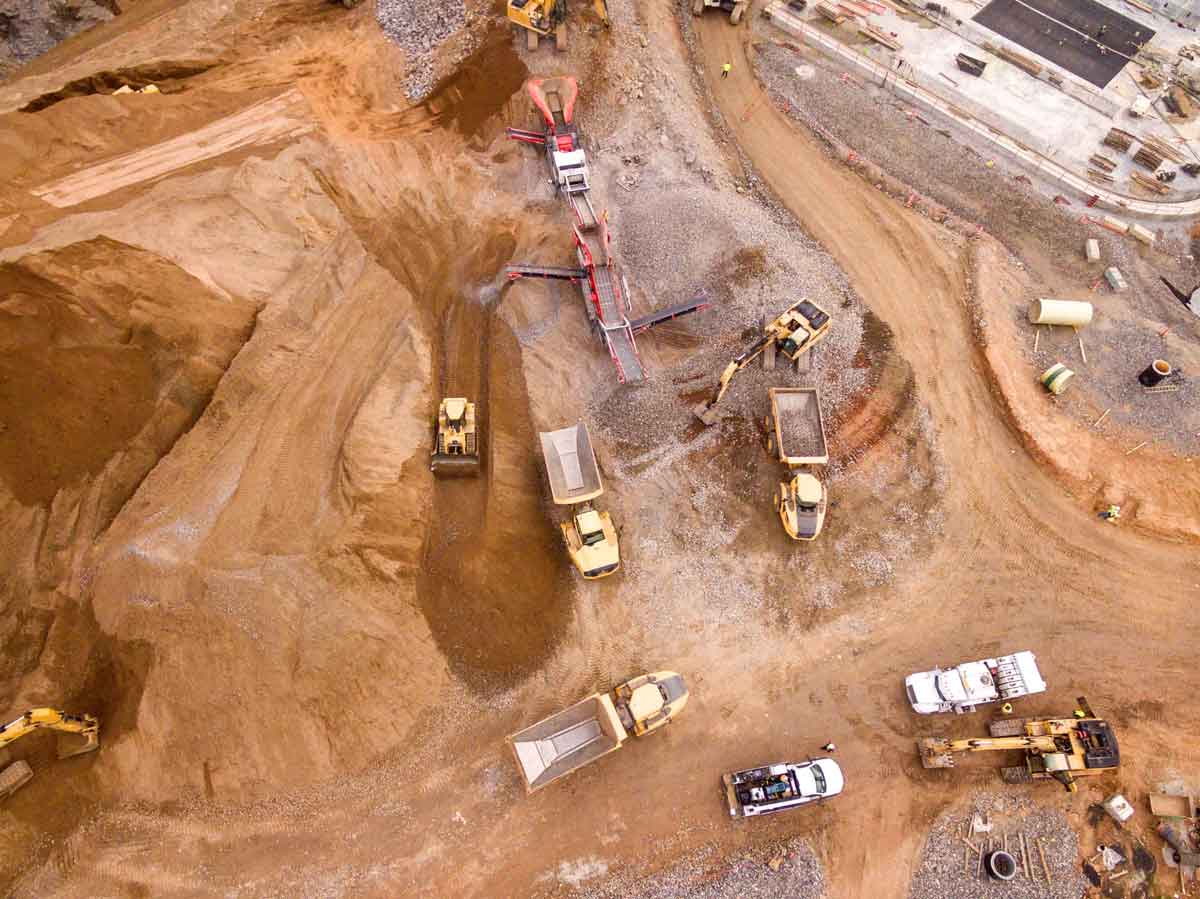What The Recent Developments in Lab-Grown Technology Really Mean
What are lab-grown diamonds? Well, they’re diamonds. The Gemological Institute of America has been grading them since 2007; they are not synthetics nor stimulants—but they are grown in a lab.
It sounds like ecomodernism is showing itself to be a viable path for a sustainable future. Lab-grown diamonds are the biggest trend happening right now in the jewellery industry. But, the actual process, along with lab-grown meat and lab-grown materials, serve as a demonstration of how technology could be the answer to saving the planet.
Priyanka Mehta worked in the mined diamond industry for ten years, but in 2017 she visited a trade show in Hong Kong and saw the advancements in CVD technology, so, she founded her own brand, N-UE, intent on lab-grown diamonds. She commented that “I began to questioned my impact and how I could make it more significant. I think if there is a kinder, equally beautiful alternative, why isn’t it the norm? So, I set out to create a curated, simple collection of pieces that appeal to a conscious buyer.” Her switch is one of many which is causing the 15-20% growth within the lab-grown diamond industry.
So how are diamonds grown in a lab? The two main techniques are Hight Pressure High Temperature (HPHT) and Chemical Vapour Disposition (CVD) which both begin with a diamond seed, which is a thin slice of a diamond. In the HPHT process the seed is placed in a chamber under extreme pressure and temperatures, much like that of the earth. However with CVD technology the seed is placed in a vacuum chamber and Carbon atoms are released into the space, with a controlled temperature and pressure, the Carbon atoms attach to the seed in the same crystalline pattern found in natural diamonds. This process reduces the natural process which takes over a billion years into one which takes only 3-6 weeks to produce a diamond which is identical to natural diamonds, even in chemical make up. Also, the all important seed, doesn’t have to be from a natural diamond. The seed can be taken from a lab-grown diamond which means, there is no dependancy on natural resources.
This process not only eliminates the environmental impacts of mining diamonds such as, river re-routing, deforestation, soil erosion and erasure of farmland or wild habitat; all of which had led to the destruction of local ecosystems. It also points to a possible future where humans are no longer dependant on natural resources, instead we might be dependant on the technologies which replicate them.

© N-UE
OTHER FORMS OF LAB-GROWN TECHNOLOGY
One example is meat production, yes the natural resources are available to us to eat meat, however, in order to satisfy the populous' demand for meat, animals are farmed for food. This has led to Broiler sheds, which usually hold 40,000-50,000 birds at a time and battery farms, where a battery cage usually holds ten chickens each with the space of a A4 paper. These natural resources have had to be scaled up so much they become cruel and unsustainable. It shouldn’t be about how we can manipulate the resources available to us, they are only natural when they are actually, natural.
However, as of December 2020 the first lab-grown meat, by US company, Eat Just, passed safety reviews in Singapore and goes on sale for the first time. The “chicken bites” are created using a cell—this does not require the slaughtering of the chicken—which is grown in a 1,200-litre bioreactor, then it’s combined with plant-based nutrients and a foetal bovine serum, which will be moved to a plant based on on the next production line. Right now they’re only available in a restaurant in Singapore but, Eat Just hopes, in time, they can scale up. Josh Tetrick of Eat Just said “I think the approval is one of the most significant milestones in the food industry in the last handful of decades. It’s an open door and it’s up to us and other companies to take that opportunity. My hope is this leads to a world in the next handful of years where the majority of meat doesn’t require killing a single animal or tearing down a single tree.” Also, Hsin Huang, the secretary general of the International Meat Secretariat, agreed that “there has been so much hype on cell-cultured meat that the anticipated first steps to mass sales is a significant moment.”
It is a significant moment. It shows that this new kind of lab-grown technology which has been in the development for many years, even decades, is becoming a reality. We have to realise that this is what the future might look like; it’s predicted that by 2040 most of our meat will not be from killing animals.
We’re also seeing similar technological developments with companies such as California based, Bolt Threads, and their material Mylo, which is grown in a lab. The process mimics the natural properties of mycelium which is the underground roots of a mushroom; mycelia cells are fed sawdust and other organic materials on a square mat whilst the humidity and temperature are controlled, the mycelium then grows into a foamy layer and it’s harvested. This material is used as an alternative to leather and Bolt Threads confirms it can be “scaled up infinitely.” In 2021, Bolt Threads is teaming up with some of the biggest names in fashion; Adidas, Kering, Lululemon and Stella McCartney, to make the Mylo Consortium available around the world.
Right now, in 2021, you could be eating lab-grown chicken bites, with a lab-grown engagement ring and wearing a lab-grown leather jacket. You’d have to be in the right place for all three to be possible—Singapore, but the point is, it is possible! Once something becomes possible it’s all about building the awareness for consumers and upscaling.

THE DRAWBACKS
Unfortunately, each of these lab-grown technologies have come under fire for their use of energy. Diamonds are created through a natural process deep in the earth, so why would we use excess energy to recreate it? Also, when it comes to lab-grown meat, Prof Raymond Pierrehumbert, co-author of a study at Oxford Martin School into long-term climate implications of cultured meat, commented that “per tonne emitted, methane has a much larger warming impact than carbon dioxide. However, it only remains in the atmosphere for about 12 years, whereas carbon dioxide persists and accumulates for millennia.” Which means, over time, the energy used for lab-grown meat could mean more pollution than cattle farming.
Mehta argues that the energy use for her brand, N-UE, compared to her experience of the mining industry doesn’t pose a problem, she gave us the numbers of lab-grown diamonds compared to the energy used to extract mined diamonds; “57000g vs 0,028g per carat, mining also requires extensive water, 480L vs 70L per carat and the removal of tons of dirt, 250 tons vs none per carat.” However, we believe this whole argument is mute because of renewable energy. Mehta says, even with her figures being lower she still only works with labs who use renewable energy; “when in a lab it is possible to monitor and control the source of energy, so, we personally check that the labs we source from use renewable sources of energy and are environmentally friendly.” Bold Threads have similarly said they plan to undertake a full LCA to measure their energy use and adjust it accordingly. The whole point is these processes give us control.
We believe that yes, these labs will all have to be run on renewable energy for their process to truly help the planet. But we believe that this is possible, renewable energy is growing at what the Finical Times recently called a “blistering pace,” in 2019 the growth of renewable energy globally increased by 12.2%, and in the last decade the world’s consumption of renewable energy nearly quadrupled from 8.2 exajoules in 2009 to 29.0 exajoules in 2019. There are many sustainable projects developing all at different paces but we hope that when these technological ideas become a reality for the masses, they will all interlock and work with each other. That is the only way a new era can be achieved.
IN CONCLUSION
Lab-grown only mirrors dependant we are on technology rather than nature—to give us what we need. Not to take too negative a view but with the population growing and natural resources remaining the same modernists say that “without technology, it [sustainability] can only be done by culling humanity.” Obviously that is not something we encourage or approve of, but it is an indication of how we need to start innovating for the bigger, more demanding society we now live in.
The 20th century economist, Joseph Schumpeter, coined the phrase ‘creative destruction’ which describes how new innovations replace existing ones and so, our society is constantly changing. He argued that capitalism is built on new markets opening up from new innovation, each innovation transforms the world into something new and allows those to reap the rewards of starting a new era. For example, the automobile, the Green Revolution or the internet. Now the ‘new world’ is one focused on a sustainable existence and the way for both profit and innovation is to take on that technological challenge.

+ Words: Caroline Louise Hamar, Luxiders Contributor




